Learn How To Pickle Vegetables The Easy Way
Let’s talk about how to pickle vegetables! Pickling vegetables for long term storage requires water bath canning.

This method is easy enough to do. And the equipment needed to do it is pretty minimal. It’s a skill worth learning for sure.
However, today, I want to talk to you about quick pickling. This is a method that can be used to pickle vegetables for short term storage.
It requires nothing more than common kitchen supplies and canning jars with plastic lids. It is very easy to do, and it is a great way to keep pickled vegetables on hand without pulling out the water bath canner.
TOOLS AND SUPPLIES NEEDED TO QUICK PICKLE VEGETABLES
Once you’ve learned how to pickle vegetables with the quick pickling method, you’ll need just a few things to get the job done.
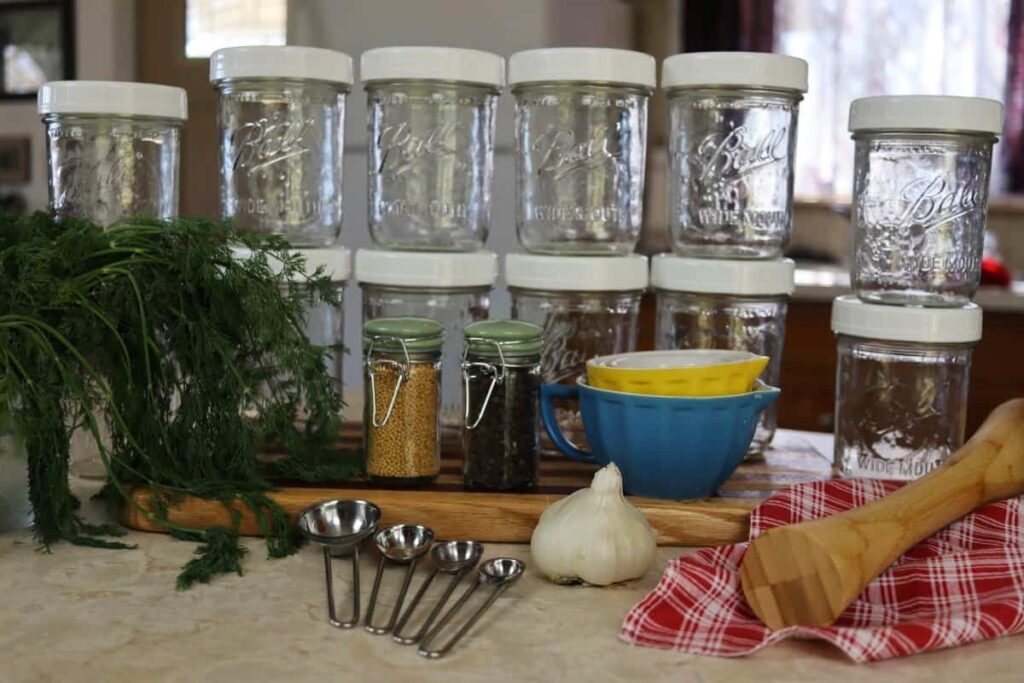
Most of these things are probably already in your kitchen. Here’s a quick list of what you’ll need …
- CANNING JARS – You can use any size canning jar to quick pickle vegetables. The most common sizes used are pint or quart jars.
- PLASTIC LIDS – This method requires the use of vinegar. The acidity in this ingredient will corrode the metal lid that is most often used with canning jars. Plastic lids are inexpensive and easy to find in most stores that carry canning supplies.
- VINEGAR – This ingredient creates a brine that provides the pickled flavor to your vegetables. It also creates an environment for them that prohibits the growth of bacteria and mold.
- WATER – Water is used to reduce some of the acidity in the recipe. Pickled vegetables would have an overpowering flavor if the water was not included to reduce the acidity from the vinegar.
- HERBS & SPICES – Both fresh and dried herbs and spices are used when pickling vegetables. Each recipe will call for different blends. Spices are not necessary to pickle vegetables. But they are what gives each jar it’s own special character, so they are highly recommended.
- SALT – Salt is often added to pickled vegetables. It is a great addition that provides a very pleasant flavor. It can be avoided if you have health concerns surrounding the consumption of this mineral.
- SUGAR – Sugar is commonly included in pickle vegetable recipes. It offsets the acidity of the vinegar. It can be substituted with other sweeteners if you follow a diet that prohibits processed sugar.
HOW TO QUICK PICKLE VEGETABLES
Quick pickling is a great way to extend the life of fresh vegetables. Throughout the gardening season, when produce is bountifully available, this method will serve you well.
You can quick pickle the excess veggies that you have around and enjoy them over the next few months, rather than throwing them in the garbage.
It is very simple to do. If there is salt, sugar, herbs or spices in your recipe, add them to the jar.

Next add just a bit of water to hydrate the salt and/or sugar. And swish it around a bit.

Place the vegetables in the jar. Pack them tight.
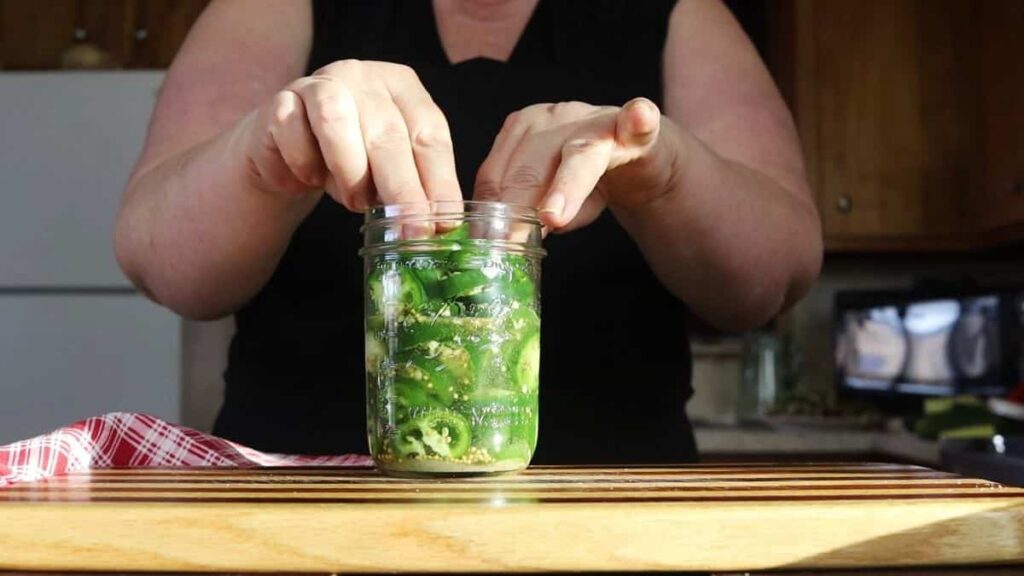
If there are fresh herbs, garlic cloves, or bay leaves in your recipe, you can tuck them between the vegetables. as you go.

Fill the jar 3/4 of the way full with water. Top off with vinegar.
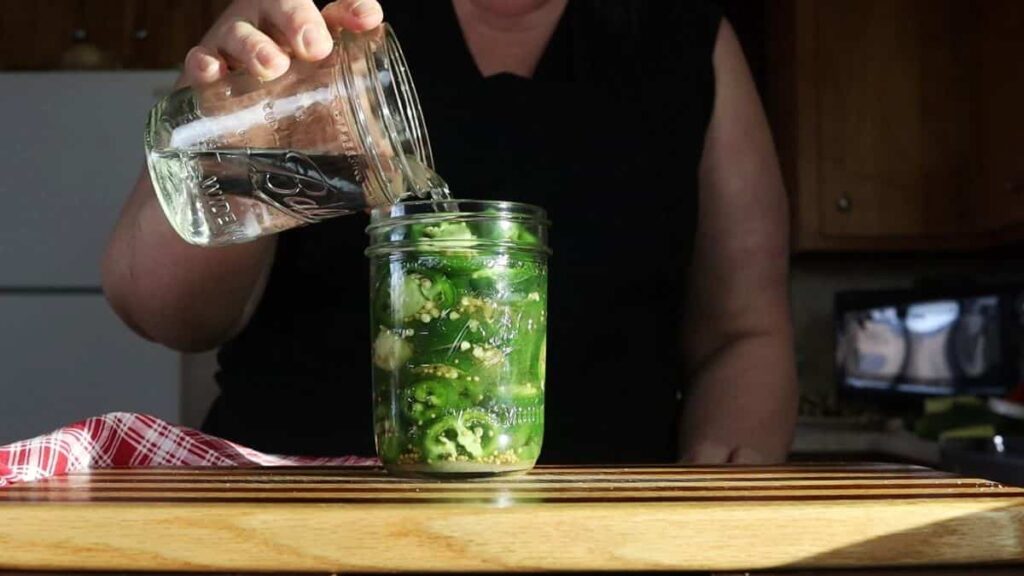
Place a lid on the jar and shake well to blend the brine.

Be sure that the vegetables are completely covered by brine. A pickling weight can be used to do this if you prefer.
I simply check my vegetables every day for a week or two. If they are floating to the top, which they will inevitably do, I push them down in the brine with a vegetable pounder to allow them to soak up the liquid.
The brine is what keeps them from developing bad bacteria and mold. If, at any point, you see any signs of spoilage or visible mold do not eat the vegetables, dispose of them.
HOW LONG DOES IT TAKE TO QUICK PICKLE VEGETABLES
The great thing about learning how to pickle vegetables using the quick pickling method is that it gives you a finished product in just days.
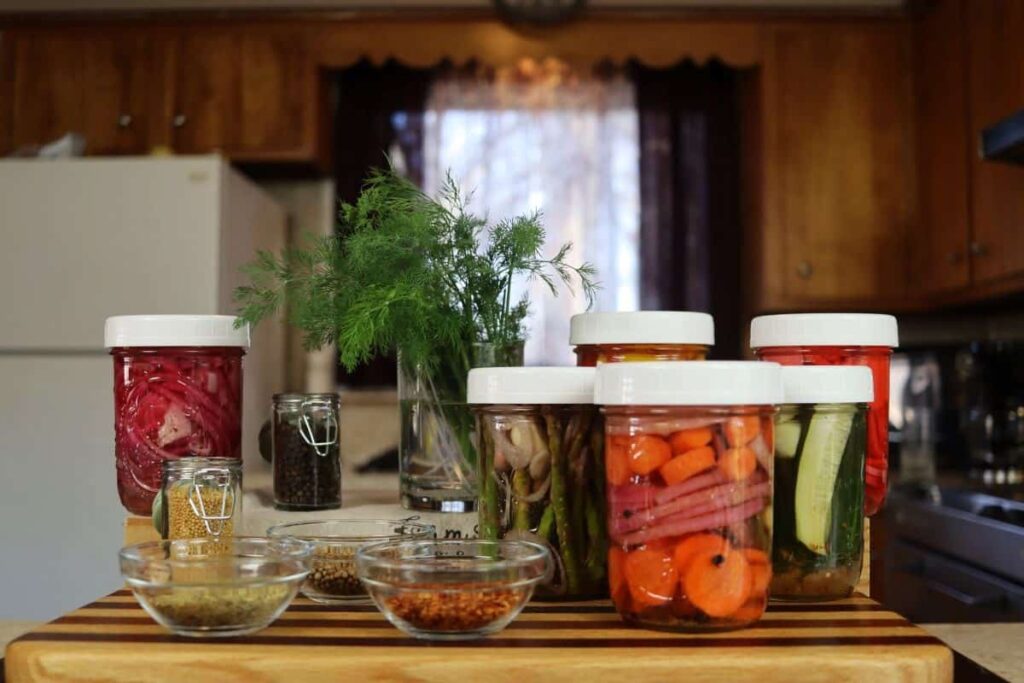
You can eat a quick pickled vegetables just hours after you make it. I find that it doesn’t have the flavor I’m looking for at that point. But 2 or 3 days into the process and quick pickled vegetables are absolutley delicious.
Different vegetables will require varying time frames to reach peak flavor. If the vegetable is very pourous, like a cucumber, it will absorb the brine very quickly. A dense, less pourous vegetable, like a carrot will take a bit longer to absorb the brine.
HOW LONG WILL QUICK PICKLED VEGETABLES KEEP?
Quick pickled products must be kept in the refrigerator. You will find that most of the information out there states that they can be kept for 2-3 weeks.

I have kept quick pickled vegetables for 3-4 months very successfully. Your eyes and your nose are your friend when monitoring your quick pickled products. Never eat a product that shows any signs of spoilage.
The flavor of the vegetables will continue to change over time. It becomes stronger with age. I enjoy them at each stage. You will have to experiment to decide exactly when they have reached peak flavor for you.
ARE QUICK PICKLED VEGETABLES GOOD FOR YOU?
There’s a lot of buzz going on out there about whether or not pickling vegetables depletes them of their nutrients. And, if I’m completley honest, I have to say that I have not delved into the scientific studies on the subject deeply enough to say that the information I’m about to present to you is 100% accurate.
I have looked at a lot of different perspectives and I’ve come to my own conclusions. I invite you to consider them along with your own research on the subject.
It is my understanding that pickling vegetables can lead to a loss of some vitamins. And yet they are still quite high in vitamin content.
The pickling process does increase the concentration of antioxidants, and many minerals, in the vegetables. And it makes them more digestable, which in turn makes it easier for the body to absorb the nutrients they contain.
So, take away … there are plenty of vitamin, minerals, and antioxidants in pickled vegetables.
They are also known to lower blood sugar content and provide anti-inflammatory properties. Pickled vegetables are a low calorie, low fat food, that provide a good source of fiber.
Making quick pickled vegetables at home is preferred to buying the pickled products found on grocery store shelves. Those products often contain preservatives and other additives that are better off avoided.
On the down side, they can be high in sodium (although you regulate the salt content). This can be a problem for those who have high blood pressure or other heart conditions.
HOW TO EAT QUICK PICKLED VEGETABLES
I would have to say that the very best way to eat pickled vegetables is straight out of the jar. But there are so many ways to enjoy them, and I absolutely indulge in every one.
They are a great addition to any meal, and can be served as a side dish all on their own.
You can use them to top burgers and sandwiches. You can even put them in potato salad, macaroni salad, and pasta salad.
Quick pickled vegetables are a really great way to fill out a charceuterie board. They provide a flavor profile that is not going to be found in other foods on the board. And it is a profile that pleasantly contrasts the more umami type flavors of meat and cheese.
You can even use quick pickled vegetables in some of your favorite cocktails. Replace the olives in a martini, add some pickled vegetables to a simple vodka and tonic, or use them in a bloody mary.
I like to have just a small portion of pickled vegetables at the end of my meals. It is not as good an option to aid in digestion as fermented vegetables are. But it is still a really great way to boost digestion after a meal.
DISCLAIMER:
The statements made on this blog have not been evaluated by the Food & Drug Administration.
Information on this blog is not intended to diagnose, treat, cure, or prevent any disease.
If you choose to treat your own health conditions, without first consulting a medical professional, that choice is yours. And you are fully responsible for it.
Recommended For You
Pin This Post For Later

If you try this recipe and love it, please give it 5 stars! It supports my work more than you may realize, and I appreciate that a great deal!
You can also show your support by tagging me on Facebook @sustainableslowliving and/or Instagram @slowlivingbydianegail when you post a pic of your finished dish.
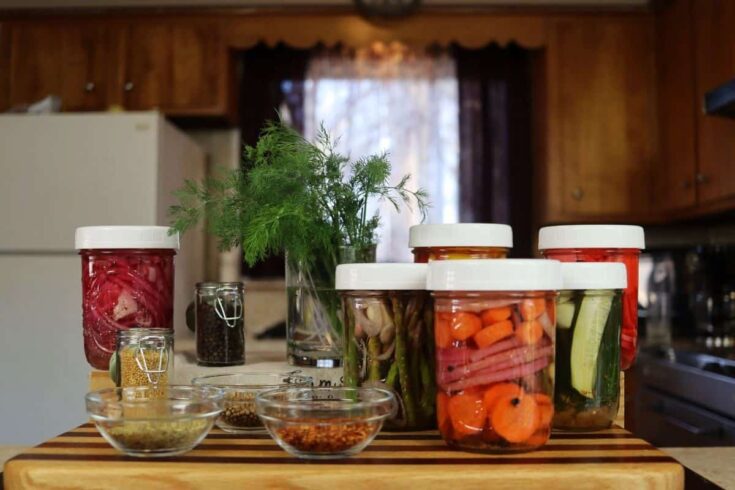
HOW TO QUICK PICKLE VEGETABLES
Quick pickling can be done with just about any vegetable. It's a quick, easy way to preserve them short term. And it's great to have quick pickled vegetables in the fridge for a snack.
Materials
- Sugar and/or salt, as needed
- Herbs and spices, as needed
- Vegetables, cut as desired
- Water
- Vinegar
Tools
- Canning jars (pint or quart size)
- Plastic lids
- Measuring spoons
- Sharp knife
Instructions
- Wash the jars and lids thoroughly. Allow them to air dry.
- Put sugar and/or salt in the jar if using it in your recipe.
- Add a small amount of water to the jar. Swish it around to start the hydration process of the sugar and/or salt.
- Add herbs and spices to the jar if using them in your recipe.
- Pack the jar with vegetables.
- If there are fresh herb sprigs, garlic cloves, or bay leaves in your recipe, tuck them in among the vegetables as you add them.
- Fill the jar 3/4 of the way with water.
- Top the jar off with vinegar.
- Push the vegetables down under the brine.
- Use a pickling weight to hold the vegetables under the brine. Or, alternatively, check the jar, once a day, for a week or two to make sure the vegetables are still sitting under the brine.
- Place the lid on the jar.
- Put the jar in the refrigerator.
- The vegetables will be ready to eat in 24 hours.
- They will last in the refrigerator for 3-4 weeks. The flavor will change over time.



